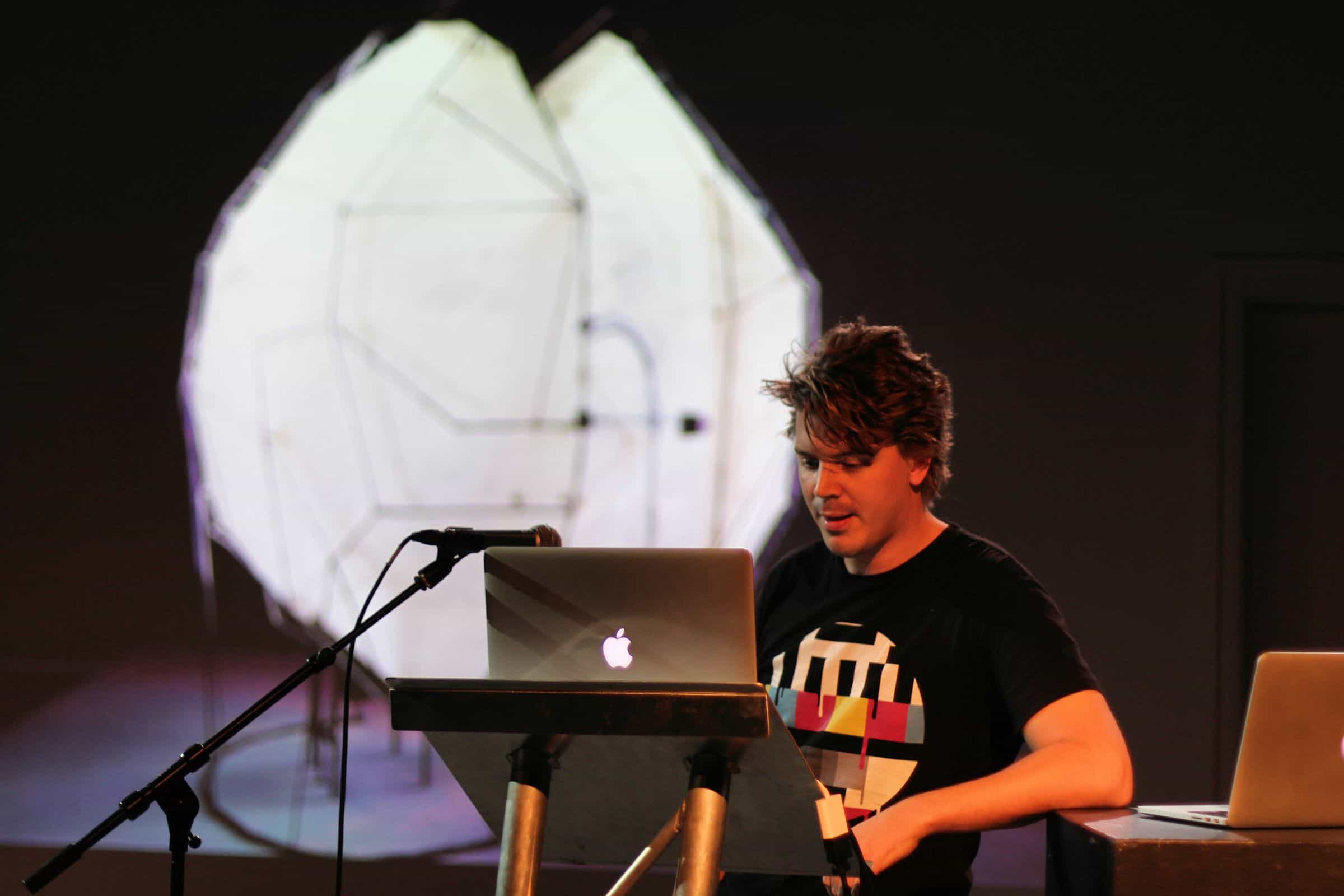From September 27–30, Toronto was home to the first-ever Forms Festival, a “multidiscplinary experiment” presented by Endless City. It showcased talks, installations, and performances from people working at the intersections of art, design, technology, and other creative fields.
The events were divided between large-scale evening shows and smaller ‘summit’ talks scheduled throughout the day. The evening events, “Forms1” and “Forms2”, were the biggest draws of the week, allowing visitors to explore interactive installations throughout Queen Street West’s Great Hall, alongside live multimedia and music performances. The evening experience — and the crowd it attracted — was heavily reminiscent of the Long Winter shows that have become a staple of the Toronto arts landscape.
Summit events, which took place in both Great Hall and the nearby Rally Ossington, included more intimate presentations from artists, designers, and technologists, each providing background on the festival’s various installations and related work.
Participants came from a wide variety of vocational backgrounds, like academia, fine art, science, technology, entertainment media, DIY culture, urban planning, and architecture; many participants identified themselves as experienced in multiple fields.
Despite the lack of a convenient catch-all term to describe the category of arts and media that the festival was centred around, Forms felt surprisingly coherent. Many of the artist talks reflected on the process of synthesizing overlapping involvements in traditionally disparate disciplines, and the variety of lenses used by speakers to analyze their work was refreshing. Talks oscillated between the specific, gritty electronics techniques used to build interactive installations to how changing demographics in urban centers are driving works preserving community history.
Unfortunately, juxtaposed on this vocational breadth was a strikingly narrow range of racial and ethnic diversity in Forms’ summit events. Only a handful of minority speakers were represented among over 30 summit presenters. In the face of all the effort the organizers presumably went to in order to bring artists and designers to the festival from all over Canada, the US, and Europe, one has to wonder why they couldn’t have showcased more creators who actually represent the population of Toronto.
The lineup of live music felt somewhat more like home, with local artists like Bambii, Lee Paradise, and Eytan Tobin playing alongside international visitors. Parisian duo NONOTAK put on a standout set, projecting shifting, luminescent forms attuned to their musical performance on a translucent, wall-like structure dividing their stage.
The “VS.VS.” project was also particularly memorable, where pairs of musicians competed over the course of the night, blasting audio at one another from opposing stages.
Though it wasn’t an explicit theme of the festival, both of the headlining installations at Forms integrated elements of research surrounding cognition with contemporary art practice. Nick Verstand’s “ANIMA” installation, a humming, planet-like sphere wrapped in animated flows, presented a meditation on the nature of dialogues among humans and between humans and machines. As viewers moved nearby, the projected flows reacted to their presence and behavior, building a discourse between viewers and the environment created by the imposing sculpture, which was described as an “AI metaphor.”
“The Mutual Wave Machine” — the result of a collaboration between Matthias Oostrik, an interaction designer, and Suzanne Dikker, a neuroscientist — explored the idea of synchronicity between two people sharing an eye-to-eye gaze. EEG monitors inside the installation searched for similarities between the brainwaves of the two participants and projected shifting images of their locked stare — it intensified when the participants’ brainwave patterns were correlated.
Forms was part of a three-city collaboration with Brooklyn’s Northside festival in June, and Amsterdam’s N-Festival earlier in April. Endless City simultaneously organized with the month-long CU Gallery exhibition. The group has announced a follow-up event, and it will be fascinating to see how Endless City chooses to evolve and define their programming as they establish a place in Toronto’s creative landscape.


